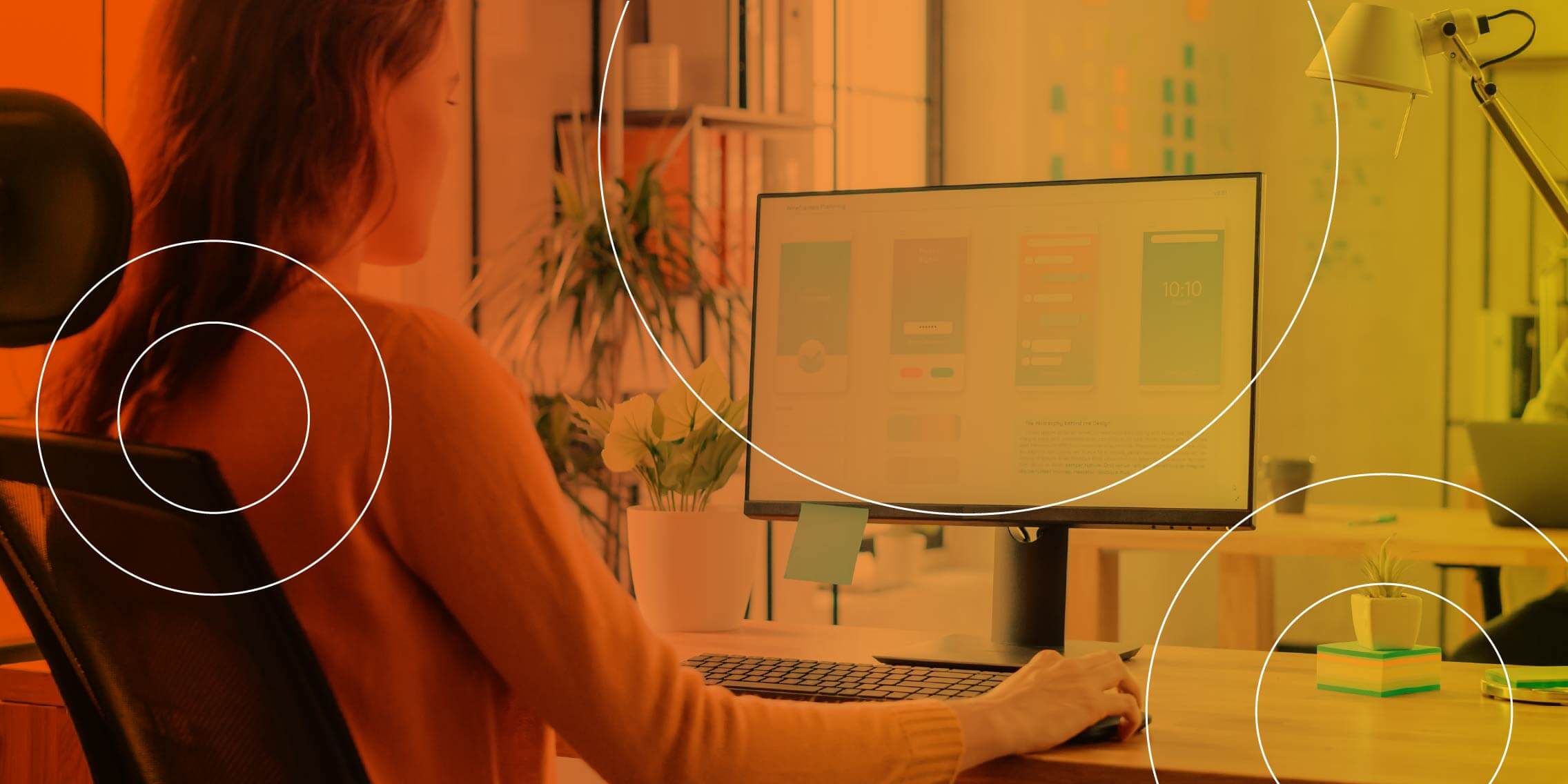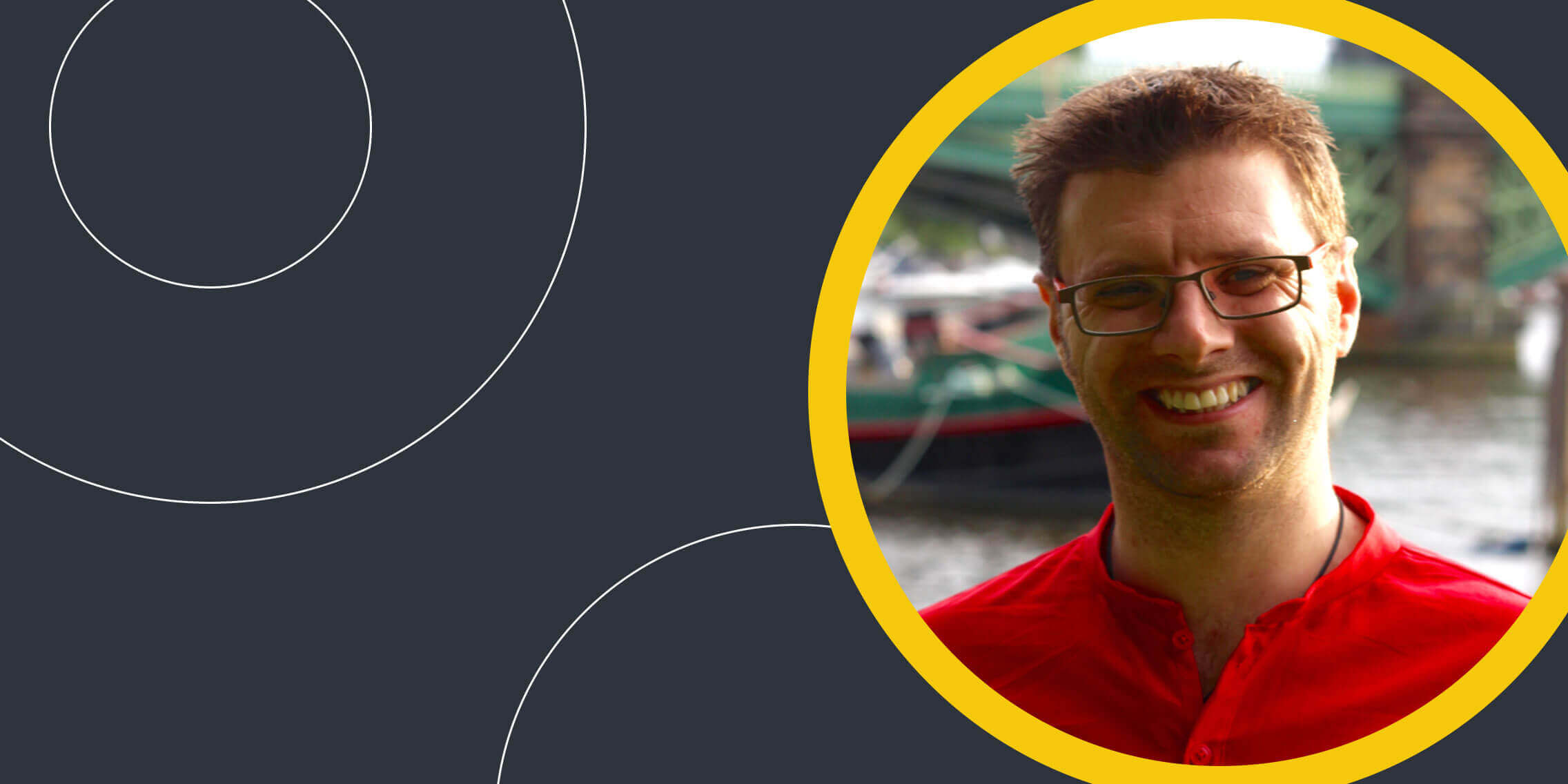Emma struggled to move from graphic design to UX.
After a year of trying, she decided to formally upskill in UX to help her move into the career she wanted. A few months later, she got her first UX job, working in the aviation industry.
In this piece, Emma shares her advice for those struggling to land their first UX role.
1. Don’t send generic applications
First, Emma believes you should tailor your CV and portfolio to each job application. “I got zero interviews when I sent generic applications,” she said.
You can create more specified applications by examining your own career goals. Consider what industry you’d like to work in, who you’d like to work for, and if your application is setting you up to achieve these goals.
Emma applied for roles that she found the “most inspiring”. Building a strong portfolio was really important to her:
If you do nothing else in the job hunt, present your projects really, really well.
Once you have projects to show, Emma recommends “making a digital portfolio where you can remove the pages you don’t need.” This allows you to quickly align your portfolio to different job descriptions.
She also recommends preparing different formats for different situations: “I’ve even presented my portfolio on a coffee table in a cafe. Make sure to have it in digital and print form.”
2. Know your limitations
Secondly, Emma feels that you should own your strengths and weaknesses during the UX job hunt.
There are many full-stack UX design roles advertised that require UX, UI design and coding skills. The truth is that UX professionals don’t have a deep knowledge of all of these areas.
Emma had the self-awareness to be open about her weaknesses to prospective employers.
She was exposed to coding in university and knew it wasn’t for her, explaining:
I studied some coding in university but I can’t write code and I wouldn’t want to go down that path. Be clear about what you are willing to do, your intentions and motivations. Don’t be pushed into an area that you don’t want to be in.
Don’t be afraid to tell interviewers if you need to work on a particular area either, “give them an idea of what they can expect from you but also say how you’re trying to improve.”
The important thing is to find an employer who’ll help you learn and reach career goals.
3. Use rejection as a motivator
Emma advocates using rejection as a motivator. Many people give up when they get bad news or if they’re feeling frustrated with the process.
Dealing with ‘failure’ is an important life lesson and it’s a normal part of the job hunting process. Take ‘no’ as a driver to get that ‘yes’.
Emma doesn’t think that job hunters should “take it personally if they get a no. Criticism is good for you, not bad. Keep looking forward to the next interview and application. It’s fantastic how you can get up every time.”
View each job application and interview as a learning curve.
4. Persistence is key
Finally, never give up on your UX job hunt, especially when you’re feeling discouraged.
Emma said that “if you’re keeping up tempo and actively job hunting, you’re going to land lots of interviews. Keep up the job search. People fail when they pause.”
She really worked hard to get her foot in the door of the UX industry. Emma signed up for LinkedIn Premium so she could ask insiders questions about job applications. She also attended local job fairs to get her name out there.
Organisation played an important part in her job search. The aspiring UX designer kept track of her applications on a spreadsheet, including company names, contacts, roles and dates. She never felt discouraged from applying for jobs that required 2-3 years UX experience either:
I had some UX experience in my graphic design career, so I knew I could sell that to employers.
Emma knew that the application process was just the beginning of the hard work:
It’s like heaven when you get into your first UX position, you’re so inspired. When you get your first UX job, that’s when the work begins. You almost forget the process you’ve been through before.





